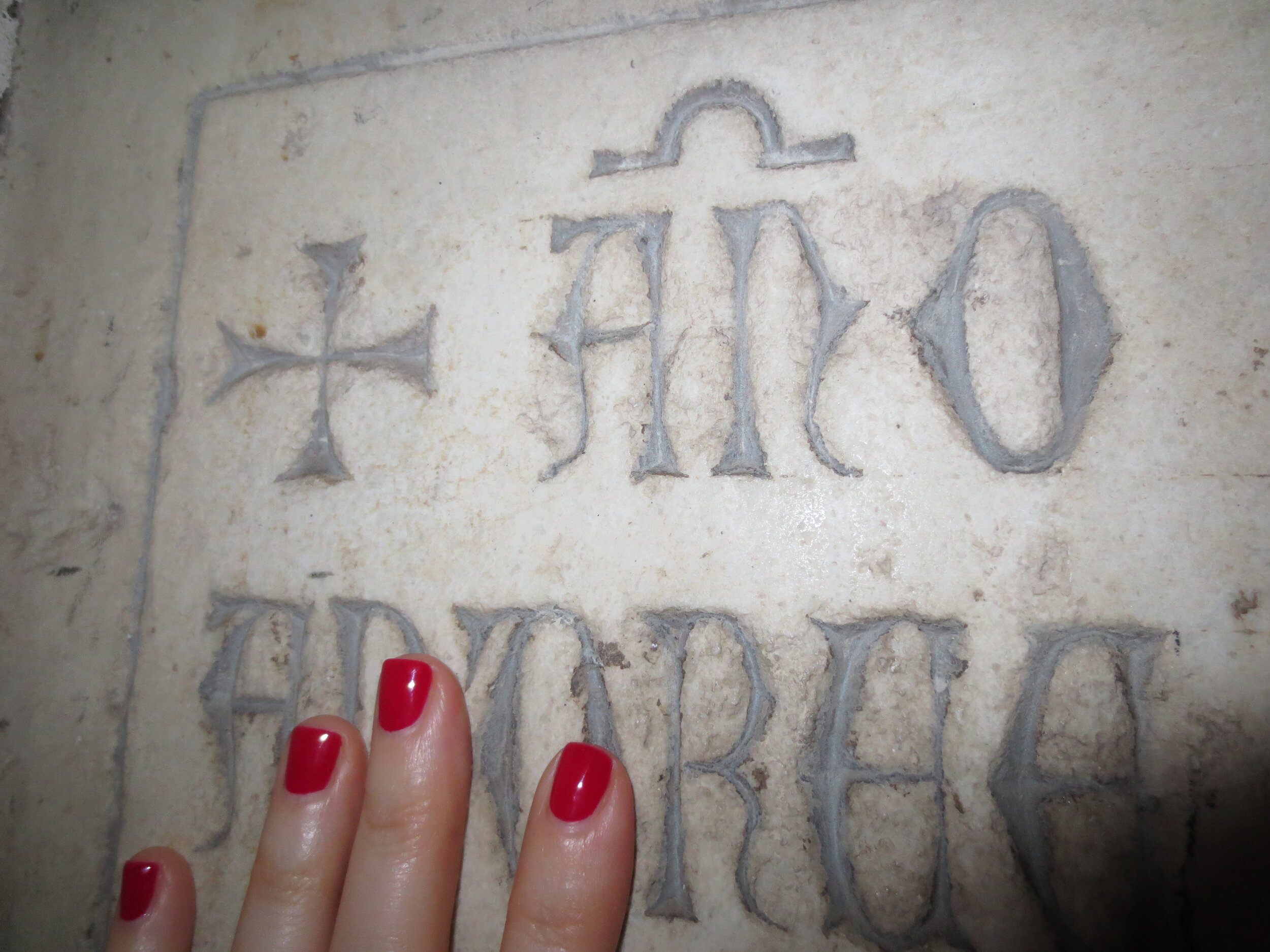In Episode 50 of the podcast, Speaking of Jung: Interviews with Jungian Analysts, I spoke with Dr. Melanie Starr Costello about the meaning of mysticism.
Catherine of Siena featured prominently in our talk. It is still a mystery as to how I found myself kneeling at her tomb, on multiple occasions, unbeknownst to me. (See photos below)
During my first visit to Rome, Italy, in 2010, I visited the Basilica di Santa Maria sopra Minerva at the recommendation of my friend, William Henry. You may know him from the television series, Ancient Aliens. William and I go way back. When I was planning my trip to Rome, I remembered that he recently returned from a visit to Italy to see the Shroud of Turin, so I called to ask him if there was anything I shouldn’t miss. That particular basilica was high on his list. But he said little as to why.
I found the church tucked away, and not looking like much of a church at all. I’ll explain.
I’ve been traveling my whole life. One thing I like to do is find a spot that feels right and then stick to that spot. Yes, I explore, but I always return to that area. And I prefer to stay at the same hotels. I like to create a home away from home.
In Rome, that spot is the Piazza della Rotonda in front of the Pantheon. I love that area ~ the hotels, the restaurants, the shops, and, of course, the great Pantheon with its eye in the sky.
If you walk down the street on the left, you come to another piazza, the Piazza della Minerva where you’ll find one of the 13 ancient Egyptian obelisks scattered throughout Rome. This one is the smallest and there’s an elephant at its base. The whole thing was designed by Gian Lorenzo Bernini and it sits in front of the Basilica di Santa Maria sopra Minerva.
The front of the basilica ~ its facade ~ is rather plain by Roman standards. But I’m a bit of a minimalist, so I like it. And there’s a whole story as to why it looks the way it does which I’m not going to get into here. But inside, inside is another story.
Those of you who know me know I don’t like to write. Just this blog post is a lot for me and I’m already feeling overwhelmed. I want to tell you about how women must cover their bare shoulders before entering (I was there in July so I was wearing a sleeveless shirt. I brought a pajmina with me and did put it on, but it’s not actually on me in the photo below. Where did it go?), and about why it’s called “sopra Minerva,” and about how Galileo knelt at that very altar on his way to the Inquisition (“But it does move,” he whispered.), and how the statue of Michelangelo’s Christ the Redeemer later had a gold leaf placed over its private parts, and speaking of that photo of me, what made my feet light up? I stood there, looking into the Carafa Chapel (the basilica has many side chapels) because it depicts scenes of the Annunciation and the Assumption, and I remembered what Jung had said about that (I’ll save it for a later blog post, or I’ll add it here after I dig it out). On and on. There are so many layers to this place.
It took till now for me to mention St. Catherine. See, I’m not much of a writer. St. Catherine of Siena ~ patron saint of Rome and of Italy ~ is entombed under the main altar of the basilica. I knew nothing about her until I eventually said oh look, there’s someone here, I wonder why…
All of this led to an interest in St. Catherine, which led to me asking Dr. Costello about her. You can read her two papers in their entirety and hear our discussion on the Ep. 50 page.
As I often do, I’ll probably come back and edit this page. I promise I’ll make a notation when I do (“Edited (date)”). For now, here are the photos that I took during my visits to the basilica in 2010, 2012, and 2015. Yes, I’ve spent a lot of time there. Oh yeah, if any of you were following me on Twitter back then, I know I posted photos from Rome. The ones of Catherine’s tomb I tweeted in 2012.
*This post was updated on Monday, Nov. 18, 2019.
All photos copyright © Laura London




















